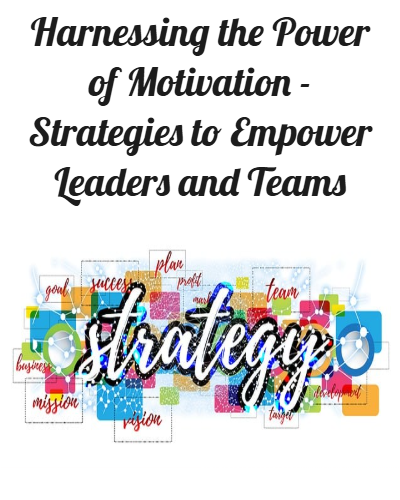Motivation is a driving force behind the success of individuals and organizations. Among the various approaches to fostering motivation, power—when wielded effectively—emerges as a potent tool for inspiring teams and achieving organizational goals. The seminal Harvard Business Review article, “Power Is the Great Motivator,” by David C. McClelland and David H. Burnham, reveals insights into how the need for power, when appropriately channeled, can transform leadership and drive productivity. Here, we explore practical strategies for using power as a positive motivator, bolstered by insights from the HBR article and other research.
Understanding Power as a Motivator
McClelland and Burnham’s research highlights that not all forms of power are equally motivating. Leaders who derive satisfaction from influencing others for the collective good (termed “institutional power”) are more effective than those driven by personal gain. Institutional power fosters a culture of trust, collaboration, and shared purpose, which fuels sustainable motivation and productivity.
Strategies for Using Power to Motivate
- Foster a Shared Vision — Great leaders use their influence to unite teams around a compelling vision.
By articulating clear goals and connecting them to the broader mission, leaders give employees a sense of purpose. Employees who feel their contributions matter are more likely to remain motivated and engaged.
Tip: Regularly communicate how everyone’s efforts align with the organization’s objectives. Use storytelling and data to make the vision tangible and relatable.
- Empower Through Delegation — Delegation is a powerful motivator when executed thoughtfully. Trusting team members with meaningful responsibilities not only lightens a leader’s load but also boosts employees’ confidence and skill sets.
Tip: Match tasks with individual strengths and career aspirations. Provide the autonomy to make decisions while offering support when needed.
- Recognize and Reward Contributions — Recognition validates effort and reinforces positive behavior. Whether through verbal praise, formal awards, or incentives, acknowledging contributions demonstrates that leadership values employees’ hard work.
Tip: Tailor recognition to individual preferences and celebrate milestones both big and small to maintain morale.
- Lead by Example — Leaders who model integrity, dedication, and resilience inspire similar behavior within their teams. By demonstrating commitment to shared goals, leaders establish credibility and foster loyalty.
Tip: Be transparent about challenges and successes. Authenticity enhances trust and strengthens relationships.
- Encourage Constructive Feedback — Creating a culture of open communication allows leaders to use their influence to address concerns and uncover growth opportunities. Constructive feedback empowers employees to improve and innovate.
Tip: Regularly solicit feedback and act on it. Employees who see their input valued are more likely to feel motivated and connected.
The Long-Term Impact of Motivational Leadership
Leaders who wield power with the intent to empower others leave a lasting legacy. As McClelland and Burnham argue, fostering institutional power over personal power creates an environment of mutual respect and shared achievement. By prioritizing the collective good and leveraging power strategically, leaders can inspire unparalleled motivation and drive lasting success.
#tabboards #businesscoaching #leadershipmistakes
Gary Brunson
gary@myclearfocus.com
Debra Rider
debra@myclearfocus.com
574.361.2674
Sustainable Growth & Profit Consultant, Coach, Mentor, and Counselor/Therapist for Business Owners and Professionals.


